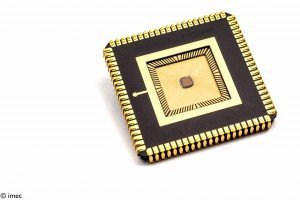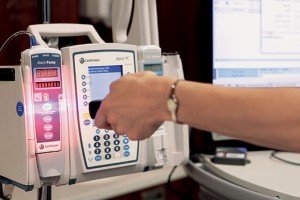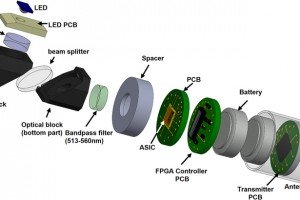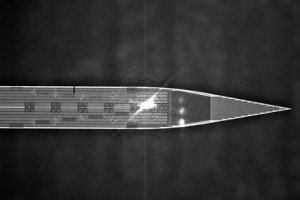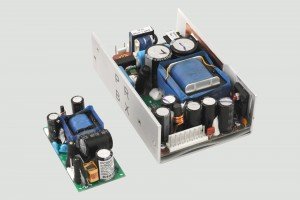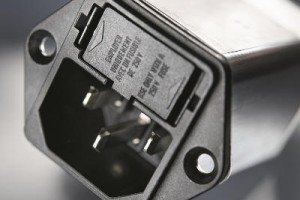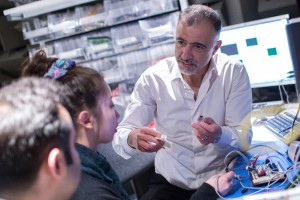Recom has added to its medical-certified power supply offering with the RACM40 (40W) and RACM65 (65W) units. Both of the series operate with an input voltage range of 85 to 264Vac and deliver 5Vdc, 12Vdc, 15Vdc, 24Vdc and 48Vdc output voltages, which can be trimmed over a ±10% range to meet the exact requirements of the application. All models feature ...
Medical Electronics
Content related to medical electronics
Imec ECG readout IC enables low-cost, low-power medical SoCs
Imec, Holst Centre and TNO, have presented a 0.6V ECG readout chip in 40nm technology based on time-domain circuit techniques. The chip maintains consistent beat detection capabilities, even under movement (~40mVpp), paving the way to a low cost, low power multi-sensor SoC solutions for wearable medical applications. There is a clear need for emerging applications in personal healthcare to add ...
Electronics patent of the month: The problem of spurious monitored signals
This month features the problem of spurious monitored signals in hospitals, which comes up in CareFusion Corporation’s GB patent. Michael Jaeger, patent attorney at leading UK patent and trade mark attorneys Withers & Rogers LLP, writes: GB Patent Number: GB2476862 Granted to: CareFusion Corporation I’ve certainly overheard some interesting discussions between my children recently… “I don’t like drinking water” my daughter ...
Kyoto University and Canon reduce cost of MRI scanner to one tenth
Canon and Kyoto University have developed technology that will reduce the price of an MRI scanner machine to a tenth of their current cost, reports the Nikkei. MRI machines currently cost between $4 million and $8 million. Canon’s technology is reducing that to $400,000 to $800,000. Smaller and more affordable MRI scanners will make cancer screenings easier and more widespread ...
Breakthrough for video-pill cancer imaging
Researchers from the University of Glasgow claim to have found a way to make swallowable cameras which can be used for detecting cancers of the throat and gut. Tiny sensing systems small enough for patients to swallow have been used by doctors but these devices have relied on additional illumination with a separate light source and have been restricted to ...
Imec neural probes to tackle Alzheimer’s
Imec has produced silicon neural probes that combine 12 monolithically integrated optrodes using a CMOS compatible process which enable optical stimulation and electronic detection of individual neurons, based on optogenetics techniques. The probes pave the way to a greater understanding of the brain and towards novel treatments for brain disorders such as Alzheimer’s, schizophrenia, autism, and epilepsy. The enormous burden ...
Powerbox medical 30W power supplies are CF and BF class
Powerbox has introduced a range of medical power supplies which combine low leakage with electromagnetic compatibility designed for medical systems in CF class and BF class. The OFM30 series of 30W open-frame supplies has specified leakage current is less than 10µA, and EMC Class B average margin is 6dB. They will deliver 30W in continuous operation (peak up to 45W) ...
Better mains filtering improves audio and medical
Schurter is tackling earth-borne interference currents in mains-powered equipment by adding a ground choke to its filtered power entry modules. Fitted in the KFA series of mains input modules alongside the existing phase and neutral common-mode choke, X capacitor and Y capacitors; as well as breaking ground-loops for audio, said the firm, special medical versions of the filters also improve ...
Professor Toumazou talks of impact of ICs on healthcare
Regius Professor Chris Toumazou will present his ideas for how semiconductor technology can be used in consumer devices for the early detection and therapy of human diseases in the Gabor lecture at Imperial College, London on 23 June. Toumazou has developed an approach to healthcare technology called U+ Life which he says can provide personalised healthcare for early detection, point ...
Light activated muscles could treat laryngeal paralysis
Researchers at the University of Bonn have found a way to stimulate the larynx muscles of mice using light. It is believed the technique could be used in humans for the treatment of laryngeal paralysis, which causes difficulties in phonation and breathing. How is light able to create nerve stimulation in muscles? This is based on molecules known as Channelrhodopsins, first discovered in ...
 Electronics Weekly Electronics Design & Components Tech News
Electronics Weekly Electronics Design & Components Tech News

